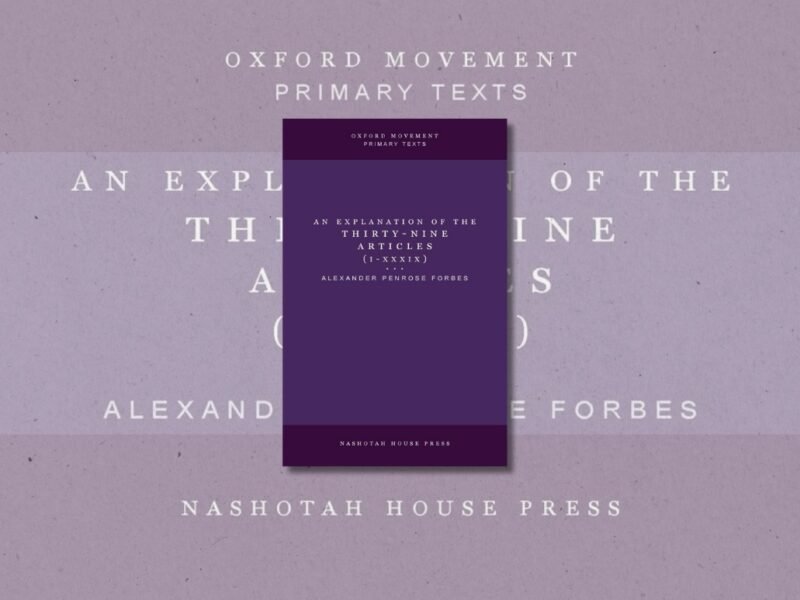Metaphysics in the Reformation: The Case of Peter Martyr Vermigli. By Silvianne Aspray. New York: Oxford University Press, 2021. 176 pp. $80.00 (cloth).
Attempting to discern a systematic approach to metaphysics in the Reformation quickly runs into a problem, namely that the Reformers generally did not treat metaphysical questions as such in their writings. As Silvianne Aspray observes, “Luther, Calvin, Bucer, and their colleagues practically never dealt with metaphysics in…explicit terms, partly because their main concerns lay elsewhere, and partly because of their not-so-straightforward—and sometimes overtly hostile—relationship with their scholastic forefathers” (3). A “historical” approach to the metaphysics of the Reformation, in which one “[searches] for treatises, passages, or loci” containing key terms, will therefore “yield very little fruit in the case of the first generation of reformers” (3).
In Metaphysics in the Reformation, Aspray seeks to circumvent this difficulty by “[proposing] a new methodology for enquiring into the implicit metaphysics of the Reformation” (2). Her suggested approach is grounded in the premise that metaphysics is an inherent part of Christian theology, even if its presence is only implicit rather than explicit. In particular, Aspray argues, “Metaphysics…has some bearing on Christian theology—implicitly or explicitly—whenever the latter reflects on the relationship between the infinite and the finite, God and the world. Discussions of God’s creation of the world, of God’s grace, or of God’s providence, for instance, fall under this category, even if they do not necessarily verbalise the God–world relationship in metaphysical terms” (3‒4).
Thus, Aspray’s goal is to demonstrate the viability of such an approach by applying it to some relevant writings of Peter Martyr Vermigli. In doing so, moreover, she attempts to mediate between what she identifies as
two discourses on the origin of modernity. On the one hand, some genealogical discourses focus on how modern understandings of difference and power originated in shifts in late medieval scholastic theology, such as the new emphasis on the univocity of being or on God’s potentia absoluta…. On the other hand, there is a genealogical discourse about the origins of modernity which puts the Reformation and Protestantism centre stage: starting from Max Weber’s famous thesis on the relationship between Protestant ethics and capitalism, this discourse has recently been reinvigorated by Brad Gregory’s Unintended Reformation. (1)
Aspray’s reasons for focusing on Vermigli are that he “remains under-researched” compared with other Reformers such as Calvin, and he “has been considered a connecting figure, arguably straddling the traditional divides between medieval scholasticism and the Reformation, between Humanism and scholasticism, and between the Reformation and Protestant scholasticism” (22).
The works of Vermigli examined by Aspray include treatments of topics such as the nature of providence, the effect of sin on divine and human agency, justification, the Eucharist, and political theology. In each case Aspray analyzes the text in order to ascertain whether Vermigli appears to be drawing on either “an ontologically participatory scheme, in which the distinction between finite and infinite causality is not seen as a matter of mutual exclusion but as a ‘grammatical’ distinction which allows for infinite agency to operate through the mediation of finite causes,” or “a more rigorously univocal picture in which the finite and the infinite share the same neutral ground of being, such that divine action must in some sense replace the finite” (12).
Aspray concludes that Vermigli’s implied metaphysics—which she variously describes as “complex” (27), “non-unified” (49), and “not uniform” (51)—defies easy categorization. As she puts it, “Vermigli simultaneously inhabits and exhibits aspects of two metaphysical frameworks which would normally be considered mutually exclusive” (27).
One could ask whether a theology that “inhabits both a participatory and a univocal metaphysical model, oscillating between them” (137) might be better described as inconsistent, or even incoherent, rather than merely “complex.” Aspray acknowledges this critique, but shrugs it off: “It seems there are more interesting and more nuanced things to be learned from studying Vermigli’s metaphysics than simply to write it off as inconsistent” (137).
For example, Aspray believes that Vermigli’s use of “multiple metaphysical models simultaneously” might in fact “be characteristic of the 16th century more broadly” (138). As she points out, this would explain why newer, “participatory” readings of some Reformers—e.g., the Finnish School’s characterization of Luther’s doctrine of justification, as well as recent treatments of John Calvin—have recently gained support, even as other scholars continue to defend older, more “univocal” readings of these figures: “If not only Vermigli’s but also the work of other reformers is sustained by a complex metaphysics, then this would help to explain why such diverse interpretations of the same body of texts—Luther’s or Calvin’s works—are possible” (139).
The idea that many of the Reformers may have simultaneously drawn on multiple metaphysical models is an intriguing one. Indeed, if true, this would relieve us from the burden of having to argue that theologians of the period adhered exclusively to either a participatory metaphysic or a univocal one. That said, I am personally not convinced that such internal tension—dare I say inconsistency—should be brushed off as unimportant. Rather, it is possible to appreciate what the case of Vermigli can tell us about other Reformers, as Aspray urges, while at the same time recognizing that insofar as their thinking is characterized by such tension, we should seek, where possible, to realize a greater measure of metaphysical consistency in our own theology than they did.
Regardless of what one takes to be the greatest import of Aspray’s study, though, it will undoubtedly be of interest to students of Vermigli. More broadly, her proposed methodology for discerning the metaphysical commitments of authors who do not explicitly speak of metaphysics as such is promising and deserves to be widely considered in virtue of the light it could shed on the Reformation at large, making this book a worthwhile read.






'Book Review: “Metaphysics in the Reformation”' has no comments
Be the first to comment this post!